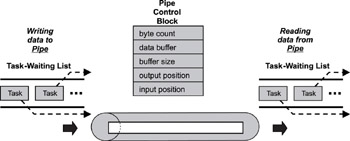
Master the fundamental concepts of real-time embedded system programming and jumpstart your embedded projects with effective design and implementation practices. This book bridges the gap between higher abstract modeling concepts and the lower-level programming aspects of embedded systems development. You gain a solid understanding of real-time embedded systems with detailed practical examples and industry wisdom on key concepts, design processes, and the available tools and methods.
Delve into the details of real-time programming so you can develop a working knowledge of the common design patterns and program structures of real-time operating systems (RTOS). The objects and services that are a part of most RTOS kernels are described and real-time system design is explored in detail. You learn how to decompose an application into units and how to combine these units with other objects and services to create standard building blocks. A rich set of ready-to-use, embedded design “building blocks” is also supplied to accelerate your development efforts and increase your productivity.
Experienced developers new to embedded systems and engineering or computer science students will both appreciate the careful balance between theory, illustrations, and practical discussions. Hard-won insights and experiences shed new light on application development, common design problems, and solutions in the embedded space. Technical managers active in software design reviews of real-time embedded systems will find this a valuable reference to the design and implementation phases.
Qing Li is a senior architect at Wind River Systems, Inc., and the lead architect of the company’s embedded IPv6 products. Qing holds four patents pending in the embedded kernel and networking protocol design areas. His 12+ years in engineering include expertise as a principal engineer designing and developing protocol stacks and embedded applications for the telecommunications and networks arena. Qing was one of a four-member Silicon Valley startup that designed and developed proprietary algorithms and applications for embedded biometric devices in the security industry.
Caroline Yao has more than 15 years of high tech experience ranging from development, project and product management, product marketing, business development, and strategic alliances. She is co-inventor of a pending patent and recently served as the director of partner solutions for Wind River Systems, Inc.
About the Authors
8.2.1 Pipe Control Blocks
8.2.1 Pipe Control Blocks
Pipes can be dynamically created or destroyed. The kernel creates and maintains pipe-specific information in an internal data structure called a pipe control block. The structure of the pipe control block varies from one implementation to another. In its general form, a pipe control block contains a kernel-allocated data buffer for the pipe’s input and output operation. The size of this buffer is maintained in the control block and is fixed when the pipe is created; it cannot be altered at run time. The current data byte count, along with the current input and output position indicators, are part of the pipe control block. The current data byte count indicates the amount of readable data in the pipe. The input position specifies where the next write operation begins in the buffer. Similarly, the output position specifies where the next read operation begins. The kernel creates two descriptors that are unique within the system I/O space and returns these descriptors to the creating task. These descriptors identify each end of the pipe uniquely.
Two task-waiting lists are associated with each pipe, as shown in Figure 8.3. One waiting list keeps track of tasks that are waiting to write into the pipe while it is full; the other keeps track of tasks that are waiting to read from the pipe while it is empty.
Figure 8.3: Pipe control block.





